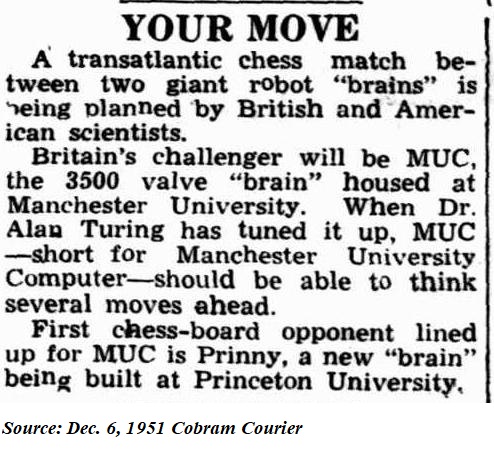© Mark Ollig
We are at the beginning of a technological paradigm shift.
Quantum computers, the next millennium of computer processing technology, are being built and programmed.
Today’s computers process data using binary digital bits in a logical state of either a 0 or a 1.
A quantum computer processes informational data using qubits.
A quantum bit or qubit can have simultaneous 0 and 1 logic states using superposition (a foundational principle of quantum mechanics).
Quantum entanglement occurs when logical states of a pair or group of qubits become linked in such a way it becomes impossible to disentangle – even if they’re physically separated.
It’s been challenging for me to understand how these quantum qubits work, mainly because I have only worked with binary digital bits for most of my life.
Programmers are coding quantum computing circuits using high-level programming languages, such as Python.
Qiskit, an opensource software development kit (SDK), is used with Python within the quantum computer programming environment.
And now, a new, highly-advanced network for quantum computings’ seemingly unlimited processing power potential, is underway.
It is called the quantum internet.
The advantages of a quantum computing internet network include linking quantum computers with each other to increase their computing processing abilities, which, by themselves, is incredible.
The official announcement for a quantum internet was made by the US Department of Energy last week in Chicago, IL.
A quantum internet network, allowing the exchange of data between quantum computers, is being designed and developed within the 17 national laboratories of the US Department of Energy.
The closest quantum internet national laboratory network to Minnesota would be at the Ames Lab located in Ames, IA.
According to the US Department of Energy, a quantum internet will use the laws of quantum mechanics to control and transmit information more securely and faster than ever before.
Although this network will someday be used by the public, during its initial stages of development, the quantum internet will be a protected communications network for science quantum cryptography tasks, scientific and industrial use, and US national security.
Quantum computing scientists will use advanced crypto-encryption protocols to make the quantum internet a virtually unhackable network.
Quantum technology utilizes the distinct properties of atomic particles, atoms, photons, and electrons, to create incredibly powerful data processing computers and other devices.
My understanding of quantum entanglement making up a quantum transmission control network is that it is a state in which atomic particles can share data in diverse proximity over long distances instantaneously without the entangled particles having to be physically connected.
Attempting to comprehend a hyper-entangled quantum state can be somewhat, shall I say, psychologically exhausting, so I decided the best thing to do was to get a cup of fresh coffee and go for a walk.
I needed a break and went outside.
Underneath the calming blue sky, seeing the branches of the pine and maple trees swaying in a slight breeze, reinvigorated my spirit. I smelled the freshly-cut grass from the neighbor’s lawn, which emphasizes we are in the middle of summer.
OK, I am once again at the keyboard.
Let’s get back to the quantum stuff.
A new network for the quantum internet is estimated to take nearly 10 years to complete; however, serious work on building it has already begun.
“The Department of Energy is proud to play an instrumental role in the development of the national quantum internet,” said US Secretary of Energy Dan Brouillette.
The Argonne National Laboratory, in Lemont, IL, is the location of one of the core quantum internet hubs.
Along with the University of Chicago, they completed an experimental 52-mile quantum entanglement within the Chicago suburbs. The Chicago hub is acting as a blueprint for building a nationwide quantum internet network.
“It’s the birth of a new technology. Every major country on Earth has launched a quantum program, because it is becoming clearer and clearer there will be big impacts,” said David Awschalom, a professor at the University of Chicago’s Argonne National Laboratory.
Stony Brook University, and Brookhaven National Laboratory are also making advancements in quantum networking and related technologies.
They have established an 80-mile quantum network testbed and are expanding it in New York State, and at Oak Ridge and Los Alamos National Laboratories.
A nationwide quantum internet network requires four objectives: verify secure quantum protocols over existing fiber networks, successfully send entangled quantum information across campuses or cities, expand the quantum internet network backbone between towns, and build out the quantum internet network between more states, using “quantum repeaters” for amplifying the network protocol signals.
Public applications over a quantum internet will include secured individual healthcare data, financial and banking data, telecommunications, and video transmissions.
I wonder if we will be using Twitter over a quantum internet.
The 2021 federal budget of the US government contains $718 million for the National Institute of Standards and Technology, and $25 million supports continuing research on a quantum internet.
More information on the quantum internet is on the US Department of Energy’s webpage at https://bit.ly/2OTYOhK.
“A Strategic Vision For America’s Quantum Networks,” released this year by the White House, can be read at https://bit.ly/2ByWlGe.
Like Dr. Sam Beckett, we may soon find ourselves taking a “Quantum Leap.”
Oh, boy.
Stay safe out there.














